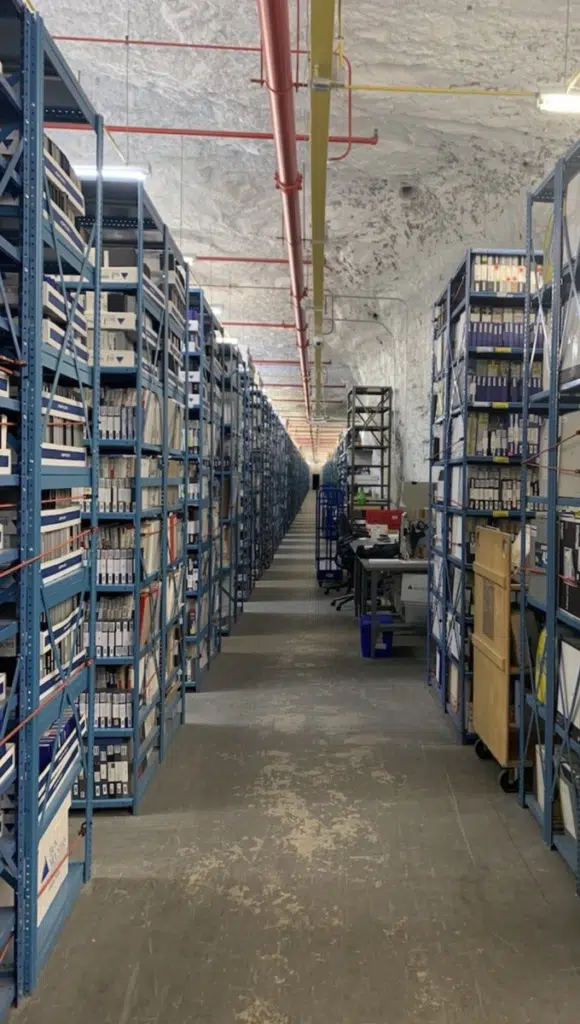
Mine Oh, Mine, Oh, … Why?
The “deep State” is a term coined to represent the depth of corruption in the government. However, the term took a strange turn when the American public learned that some government employees worked 230 feet underground in a limestone mine in Pennsylvania.
When I first heard about this story, I thought either someone had made a mistake in reporting it, or it was a joke. It turns out the story is true, which brings about the inevitable question of … why?
Earlier this week, Elon Musk announced that the U.S. government does indeed store and process retirement paperwork in a mine in Pennsylvania. Joking about the circumstances, Musk added:
“The elevator breaks down sometimes, and nobody can retire. “Doesn’t that sound crazy?”
Allow me to answer that question. Yes, Elon, it does sound crazy. Apparently, as DOGE continues to trim excess fat from government payrolls, they became aware that federal employees’ retirement paperwork didn’t exactly fly through the system. Musk used the term “right size” when describing the concept of eliminating unnecessary positions, adding that encouraging people to retire early with full benefits was a good thing.
However, in pursuing the goal of downsizing the government, they learned of the bottleneck the mine created.
“We were told the most number of people that could retire possibly in a month is 10,000 because all the retirement paperwork is written down on a piece of paper. Then it goes down a mine. There needs to be a lot of people working for the federal government, but not as many as currently. Instead of working in a mineshaft, carrying manila envelopes to boxes in a mine, you could do practically anything else, and you would add to the goods and services of the United States in a more useful way.”
According to the Center for Land Use Interpretation, the converted mine serves as storage facilities for various national companies and the U.S. government. Iron Mountain has owned it since the late 1990s. Previously, U.S. Steel excavated limestone from the site for its mills in the Pittsburgh area.
The government has utilized various sections of the expansive facility for functions involving multiple agencies, including the Federal Investigative Services and the Patent and Trademark Office. Since the 1970s, employees at the Office of Personnel Management (OPM) have been processing an increasing number of retirement files and creating storage space for these records, as outlined in a document from the General Services Administration for the fiscal year 2016.
A 2014 report by the Washington Post described the process of handling employee data in a mine. Daily, paper files are delivered to the mine by truck, and employees manually transfer them from cavern to cavern, carefully reviewing every line of data. This continues despite numerous costly attempts to implement automation over the years. As of 2014, multiple administrations had already spent at least $100 million over the past 30 years on efforts to automate this process.
OPM aims to process applications within 60 days or less and maintain a backlog of no more than 13,000 unprocessed applications at any given time. According to its own data, OPM has achieved its goal for average processing time in only five of the past 16 months, and it has not met the backlog goal in any of those months.
A report from the Office of the Inspector General of the OPM in 2023 identified three main reasons for the slow processing of applications: reliance on a paper-based system, insufficient staffing, and incomplete applications. The report revealed that when there were errors, discrepancies, or missing information, claims could take an average of over 100 days to process.
In recent years, there have been indications that the OPM aims to modernize its processes completely. In 2014, a report by the Post revealed that computers were handling certain aspects of the process. Last summer, the Federal News Network reported that OPM was testing a pilot program for an online retirement application. However, according to the 2023 inspector general’s report, the entire modernization process may still be several years away.
Last month, the Office OPM received over 16,000 new retirement claims and processed 6,700. January typically experiences a surge in retirement applications; for comparison, in December, OPM received 5,020 applications and processed 4,988. Despite this high processing rate in December, OPM still had over 13,800 unprocessed claims in its inventory.
After Musk’s announcement, McLaurine Pinover, an OPM spokesperson, told USA Today:
“OPM is evaluating methods to enhance the efficiency of retirement application processing at its Boyers, Pennsylvania facility. Our goal is to better serve federal employees and the American people.”
A few months ago, I wrote a column about office space the government was paying for that was either empty or barely used. So again, why are any government employees working in a mine lost in a time warp doing everything by hand? This is beyond inefficient; this is downright stupidity. For the spokesperson to say they are “evaluating methods to enhance the efficiency of retirement application processing at its Boyers, Pennsylvania facility” Is insulting to our intelligence.
What exactly are you evaluating? Move the operation out of the damn mine. There, no more evaluation is needed.
By the way, In 2015, the GSA said parts of the mine’s ceiling were degrading. That was nine years ago, so you can also add dangerous in addition to being inefficient and stupid.



